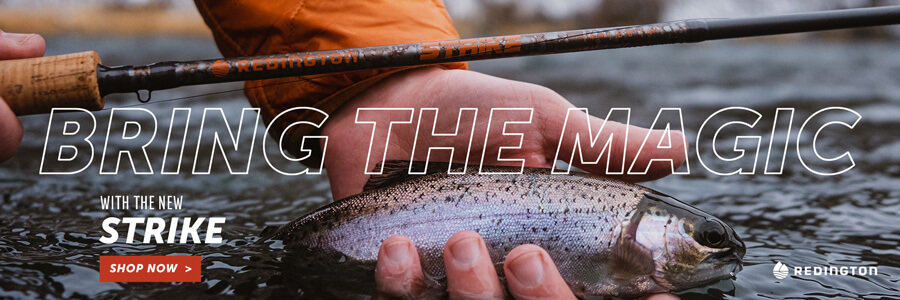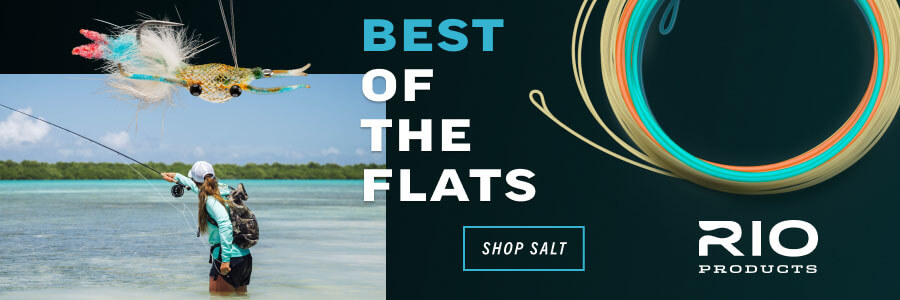Disco Shrimp
When it comes right down to it, like most anglers, I just love catching fish… but if I had my druthers, I would most certainly choose sight-fishing on fly. In my mind, the excitement and anticipation of feeling tailers, or cruising fish in clear water is immeasurable. That being said; the addition of top water or surface flies almost always elevates these euphoric feelings to the next level.
Deer hair bugs, although classically beautiful, are quick to saturate, and can present a bit of a problem when a soft presentation is required. Pencil poppers compensate for buoyancy shortcomings of deer hair and are somewhat easier to cast, however, they usually lack the durability that I like. Sheet-foam flies like the Gartside’s Gurgler seem to remedy the above-mentioned faults, but they are easily pushed on the surface resulting in frequent short strikes, poor hookups, or altogether misses.
A few years back, in an effort to create a topwater fly alternative, I went to work on shrimp pattern I dubbed the “Disco Shrimp”. The fly had to be lightweight enough to cast and float easily, yet hefty enough to make a noticeable disturbance on the surface without skating out of the strike zone due to the wakes of pursuing predators. The secret lies in the plastic worm rattle and a couple of sequins. The trifecta the “clicking” rattle, sharp “pop” from the sequin and a spray of water work in harmony to command the attention of any fish in the area, and wit the addition of a mono weed guard, will keep you out of the turtle grass and mangroves.
MATERIALS LIST
- Hook: Daiichi X472 (long-shank hook) sizes 1, 2 & 4
- Thread: Brown 140 or 210 Denier
- Body: Tan 3mm foam, Golden Brown Ice Dub Red Fox Tail
- Eyes: EP Crab & Shrimp Eyes (Black)
- Rattle: Woodies Rattler Inserts (Clear)
- Antenna: 4 Strands of Root Beer Krystal Flash
- Tail: 4mm Gold Sequin (available at any craft store)
Adhesive: Zap CA Super Thin
- Start by sliding on two gold Sequins (Convex side toward the eye of the hook). Place the hook in the vice – point down, and start the thread at the point of the hook. Tie in a small tuft of foxtail fur about one inch long.
- On top of the fox, tie in four legs at their middle. Fold the legs back on themselves so they stick out past the bend of the hook and tie down. I like to trim them different lengths, leaving some longer than the fox. Tie in the eyes on top; they should be even with or extend just slightly past the bend of the hook.
- Tie in the rattle (point forward) on top of all the other materials and slightly in front of the eyes. Add a drop of Zap CA to secure the rattle. Tie in 4 doubled strands of Krystal flash for the antenna and another small bunch of fox on top to cover the rattle.
- Dub the thread with about 3 inches of dubbing and wrap forward to cover all your previous wraps. On top of the rattle, tie in the foam with 4-5 overlapping wraps. It should be 2 1⁄2 inches long, a quarter of an inch wide and tapered to a point at the shrimp’s head.
- Dub the thread with 2 inch of ice dub and make 4-5 turns, about 1⁄4 inch under the foam. When you are out of dub tie down a segment of foam.
- Repeat process 1-2 more times, reducing the size of the segment slightly each time until you reach the sequins. The sequins should prop up the tag end of the foam (tail). Trim off the excess foam, and whip finish behind the sequins. Remove thread and finish the fly with a drop of Clear Cure Goo Hydro.
The fly was originally designed for Mangrove snapper, but tied in larger sizes, quickly became one of my go-to’s for just about everything saltwater. The first versions of this pattern called for 2mm sheet foam, but I found variables like hook size, leader type and general abuse by redfish altered the fly’s buoyancy. These days, to make it fail-safe, I almost always use 3mm foam. The thicker foam protects the brittle plastic rattle and positions the cup shaped sequin above the water’s surface at a 45-degree angle. The result is one heck of a disturbance on the surface with very little forward movement of the fly.
Due to its diminutive nature, tying the Disco Shrimp successfully depends on keeping your thread wraps close and concise. There are a lot of materials tied in at the bend of the hook, so flatten your thread by spinning the bobbin counter-clockwise, place each wrap carefully to reduce bulk and secure the materials with a drop of thin quick drying adhesive like ZAP-A-GAP. This will make your flies more durable and significantly reduce the number of wraps needed at each step. A 140 denier thread will also help keep down excess bulk, however be careful not to cut the foam with the thinner thread.




